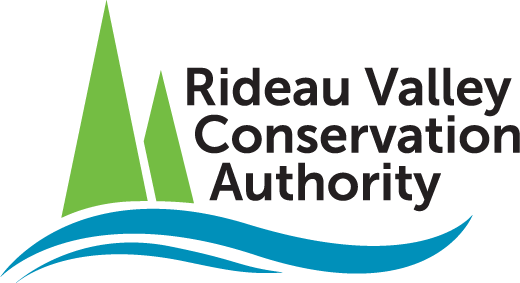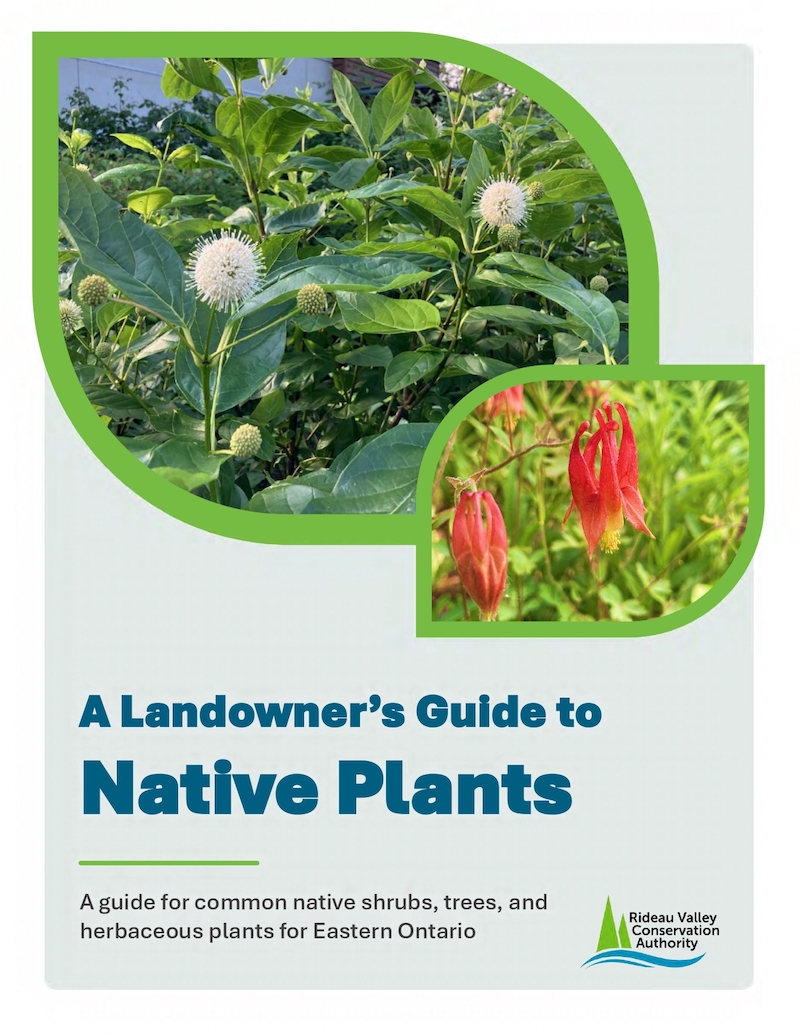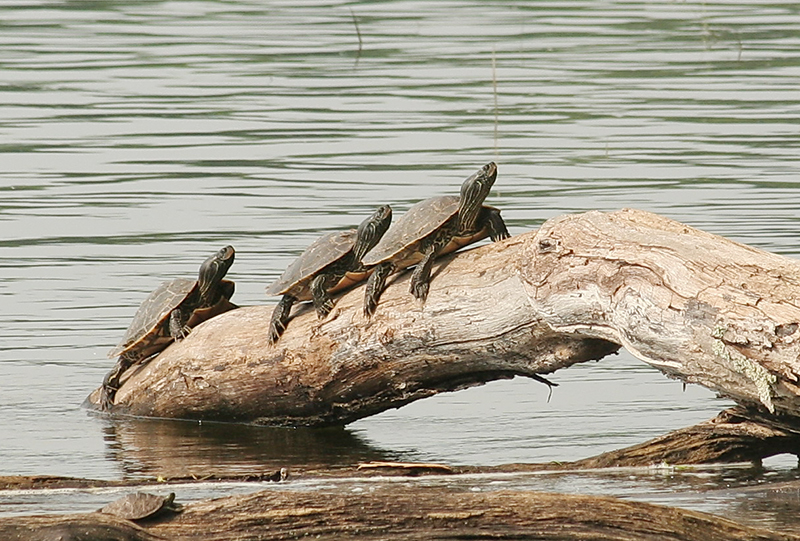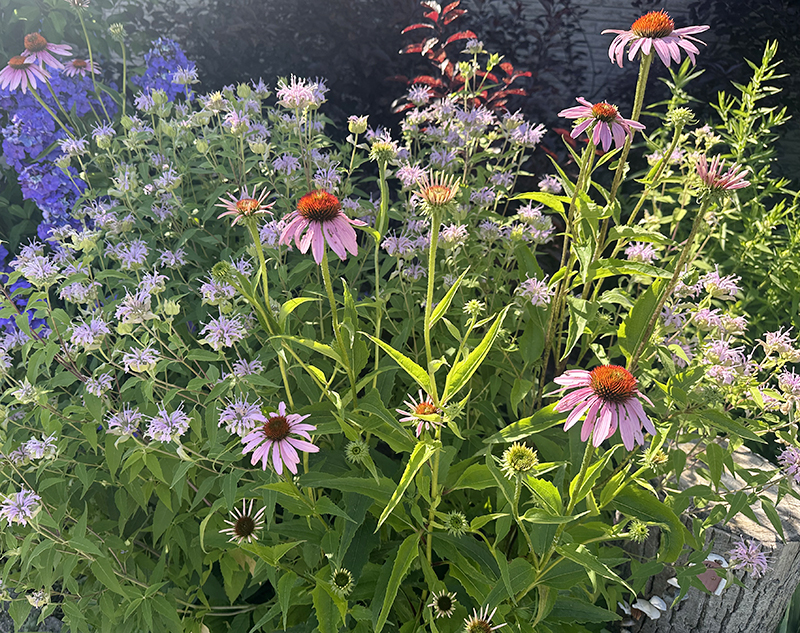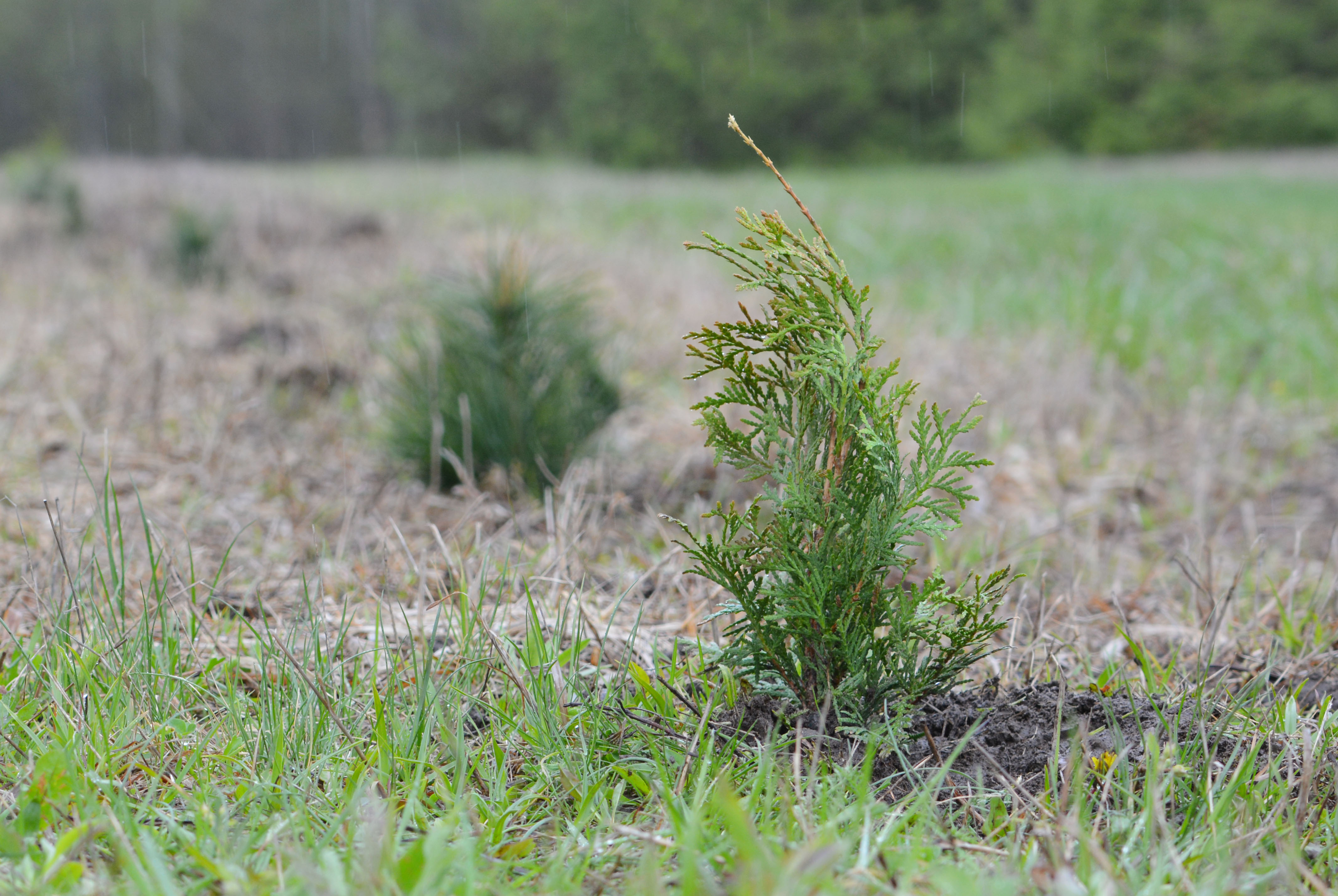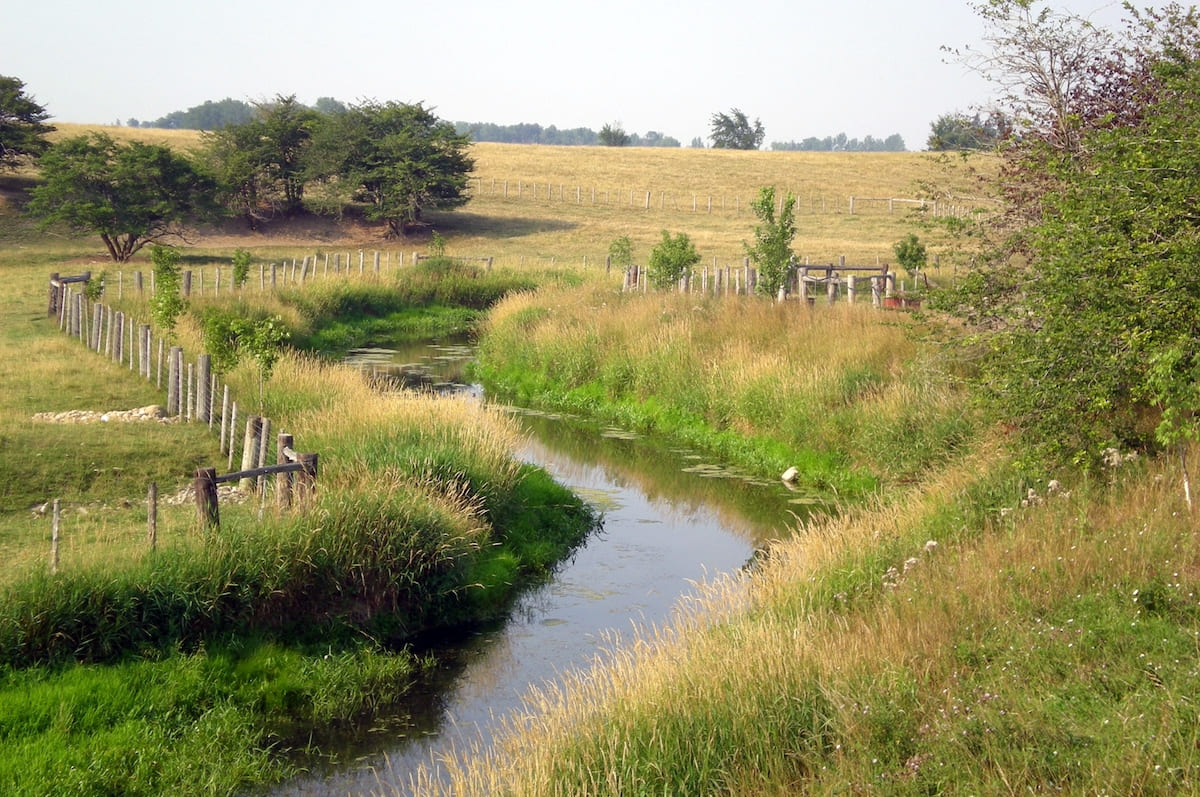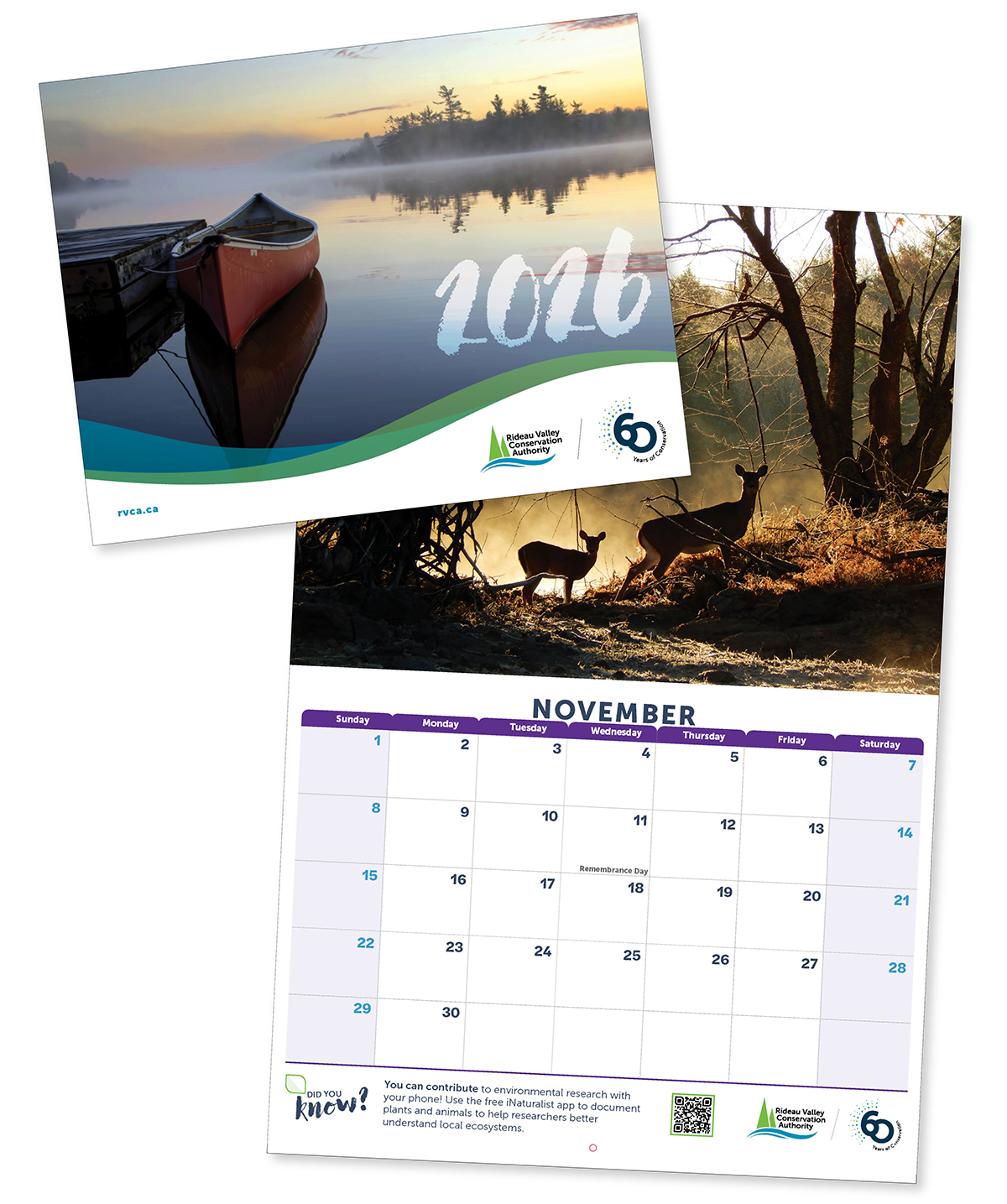Each and every property has potential to improve greenspace and habitat. Depending on the size of your property, consider the following actions:
Plant native vegetation
Planting native trees, shrubs, and flowers in your gardens, along the edges of your property and/or instead of grass provides important food sources like berries, nuts, seeds, and nectar for various wildlife while making your property more resistent to droughts, erosion and extreme heat. Use our A Landowner's Guide to Native Plants (Eastern Ontario) to learn which native species would work best on your property.
Managing invasive species on your property is also critical for the success of native plants. Learn more at our Invasive Species page.
Create wildlife habitat
In urban settings:
- Add structures like bird and bat boxes around your property
- Shelter pollinators by leaving some natural areas on your property, and/or "leaving the leaves" in the fall
- Create a pollinator patch by adding flowering native plants to your garden
- Provide clean drinking water with a well-maintained birdbath
- Reduce use of pesticides
In rural or shoreline settings:
In addition to the above,
- Add turtle and fish habitat structures
- Create shelter and nesting spaces by leaving fallen trees and snags (where safe to do so), creating brush and rock piles, adding vernal pools and leaving areas in a more natural state
- Add ponds and constructed wetlands
Protect and enhance meadow and tallgrass prairie habitat
Meadows and tall grass prairies provide critical bird and pollinator habitat. They have been on the decline in Ontario due to land use pressures and fire suppression.
Even in urban settings you can help! Consider converting old lawn, pasture, fields, or other un-productive areas into a meadow or prairie with a diverse selection of native wildflowers and warm-season grasses. In urban settings, set aside a small area of your lawn to create a micro-prairie.
Protect and enhance forest cover
Maintain existing trees where possible and consider planting new native trees on idle land. Use sustainable forestry practices in your woodlot including planting native trees, thinning or selectively harvesting, managing invasive species and improving wildlife habitats. Consider enrolling in Ontario’s Managed Forest Tax Incentive Program (MFTIP).
Protect and enhance wetlands
Wetland restoration and protection is critical to watershed health. Wetlands provide critical wildlife habitat, improve water quality, recharge groundwater, and store floodwaters.
- Avoid draining, filling or interfering with wetlands whenever possible.
- Restore or enhance existing wetland by planting native wetland plants, managing invasive species, and enhancing wildlife habitat structures.
- Where space allows, consider adding constructed wetlands in low lying, poorly draining areas that may have been wetland prior to development.
Incorporate habitat friendly farming practices
Sustainable farming practices such as delayed haying, windbreak creation, livestock restriction and shoreline buffers can all make a difference to the wildlife who live on your property. Funding sources may be available for select projects through the Ottawa and Rideau Valley Rural Clean Water Programs, Ducks Unlimited Canada, ALUS Mississippi-Rideau and other agriculture based programs such as Species at Risk Farm Incentive Program, RALP, OSCIA).
